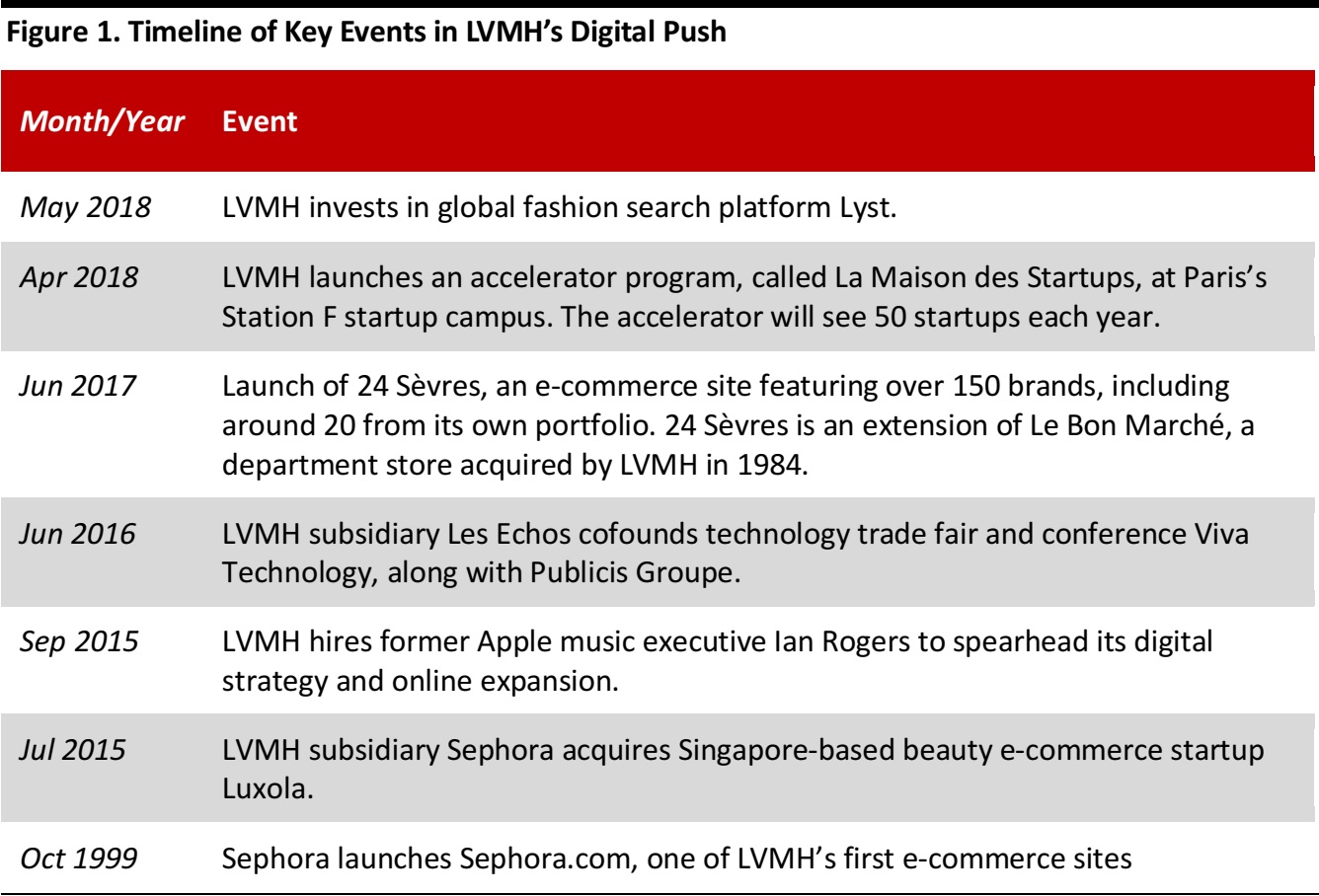Introduction
As more and more luxury shoppers turn to e-commerce for purchases of apparel, accessories and jewelry, owners of high-end brands are jostling to build share in the online channel. The most recent move comes from French luxury group LVMH, through its investment in global fashion search platform Lyst.
In this flash report, we examine this investment as well as some of LVMH’s other moves in its digital strategy push.
LVMH’s Investment in Lyst
Lyst is a London-based fashion platform which works as a search and discovery engine, connecting shoppers to numerous websites that sell the items they wish to buy. Lyst receives commissions for successful sales in the process and also sells products on its website. Here are some key points about the investment:
- Neither Lyst nor LVMH disclosed details of the funds raised, but sources claim that it is in the range of £50–£100 million.
- Lyst CEO Chris Morton told news reporters that his firm will use the funds to expand across Europe and Asia, with local language websites in some regions. Lyst recently launched a French website for its shoppers in France; the company has regional sites for the UK, Australia and Canada, apart from its global website.
- Lyst will also use the funds to improve its technology and search algorithms.
- LVMH’s Chief Digital Officer Ian Rogers will be joining the Lyst board as part of the investment deal.
- Bernard Arnault, Chairman and CEO of LVMH, had previously invested in Lyst through his family office.
Venture capital (VC) firms Accel Partners, Balderton Capital, Draper Esprit and 14W, and an American hedge fund are among Lyst’s existing investors. Lyst is now profitable and has grown revenues by over 400% since it last raised funds three years ago, the company told news media.
Lyst stands out from its peer fashion aggregators, such as Shoptiques and Farfetch, because of some of its unique features:
- Scale: Lyst provides access to over 12,000 designers and brands through its platform.
- Focus: Lyst predominantly focuses on premium fashion.
- Technology: Lyst uses machine-learning algorithms to deliver a personalized experience and display the availability of products in stock in stores, in real time.
- Universal shopping cart: Lyst’s universal shopping cart allows shoppers to integrate their purchases from other sites into a single shopping cart and complete the checkout process. Morton said that the universal shopping cart has boosted conversion rates by up to 500%.
LVMH’s Advances in Digital Strategy
This has not been LVMH’s only move in growing its digital prowess. In the timeline below, we outline some key events in the luxury group’s digital journey.
 Source: Reuters.com/Wsj.com/Company reports
Source: Reuters.com/Wsj.com/Company reports
Over the years, LVMH has been advancing its digital strategy, with several of its brands launching their own e-commerce sites and stores featuring interactive experiences led by technology.
The most notable, with a strong online presence and digital in-store initiatives, is beauty-brand Sephora, which retails across 1,800 stores and 27 websites across 34 countries. Along with being an “e-commerce pioneer,” Sephora is resolutely modernizing its stores with technology as a principal facet in delivering interactive shopping experiences. Sephora’s websites and app feature: a “Beauty Board” for users to tag selfies with cosmetics they have used in achieving their look; a “Virtual Artist” to try on makeup virtually; and a “Digital Skincare Guide” built into iPads that sit at beauty stations in its stores and assist store staff with consultations provided to shoppers.
LVMH’s Digital Outlook
In its latest annual report, LVMH stated that its online sales now represent “several billion euros” and grew by 30% in 2017. It also intends to further its digital communication and marketing initiatives as well as its omnichannel strategy for certain brands.
At the recently concluded Viva Technology conference, Arnault remarked that technology has been part of LVMH’s strategy for some time and that it is working on incorporating artificial intelligence (AI) in developing several areas within the business. One of the areas includes accelerating craftsmanship to visualize what a product may look like. Arnault said that AI will also allow a user to try on a dress virtually and move in it to understand how the dress fits and flows.

 Source: Reuters.com/Wsj.com/Company reports
Source: Reuters.com/Wsj.com/Company reports